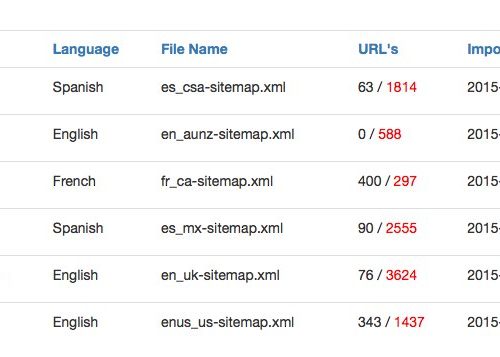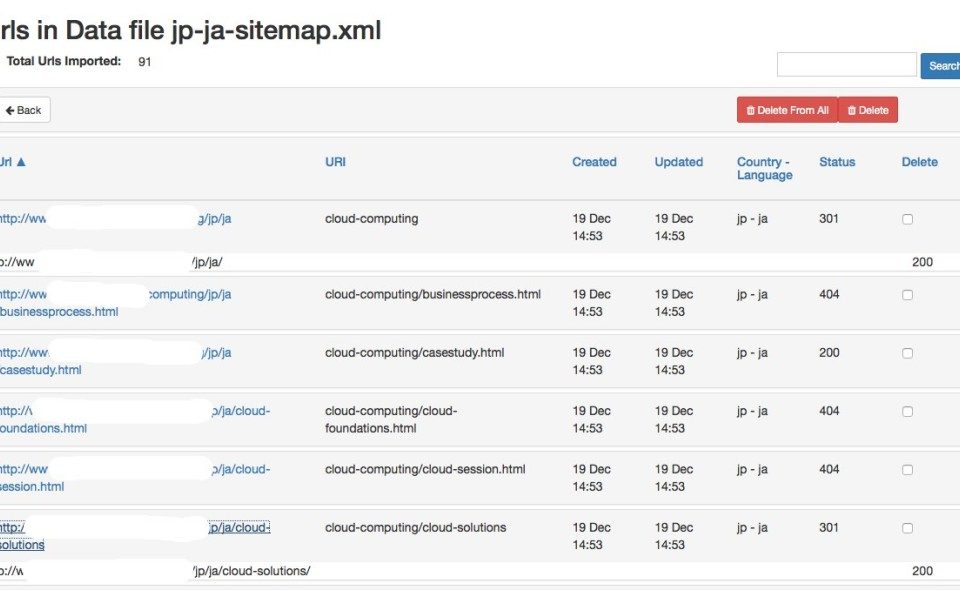Most global companies build their XML site maps dynamically from their various CMS systems. This results in the potential for numerous errors from broken pages, redirected pages, and canonical pages being added to the files. In some cases, the local market versions are not even updated after the first build.
Search engines have told the SEO community their crawl rate can be significantly impacted if even 1% of the submitted URLs in teh XML map have an error.
We have had many cases where a client has imported their XML site maps into HREFLang Builder and ran the URL test function only to find that many of these have huge numbers of errors. In one case, a Fortune 100 company learned nearly 40% of the URLs in their XML site maps had 404 errors.
This report allowed them to identify 26 different problems and once resolved resulted in an index rate of nearly 98% increasing their traffic from organic search by 86% in the first 60 days.

Once the source files are imported, traditionally from existing XML site maps, the user can see a difference in the URL counts as well as the number of errors. In the case below, we see Argentina has 1,814 URL’s that had some sort of header, canonical or robots directive error.
Upon seeing a report shown above, HREFLang Builder allows a user to drill down into a specific country and see the errors. In the example below, for Japan, there were a number of pages that had 301 redirects as well as 404 errors. In this case, they found that the XML site map and the pages were rendered without closing the folder. This resulted in every page requiring a 301 redirect to add the “/” and then reload. By identifying this error, fixing the site, and rebuilding the XML site map they increased the number of pages indexed as well as reduced server overhead.



